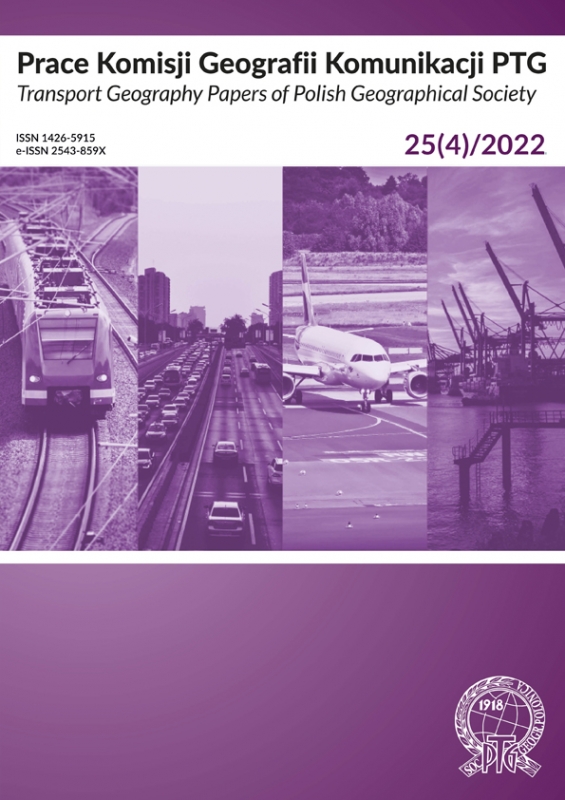Effects of choice of data aggregation method to a point on walking accessibility results using the G2SFCA method
Effects of choice of data aggregation method to a point on walking accessibility results using the G2SFCA method
Author(s): Łukasz LechowskiSubject(s): Geography, Regional studies
Published by: Wydawnictwo Uniwersytetu Jagiellońskiego
Keywords: spatial accessibility; walking; GIS; 2SFCA; data aggregation
Summary/Abstract: In spatial accessibility studies based on market areas, such as floating catchment area (FCA) family methods, it is crucial to identify the point to which weights are assigned, both on the demand and supply side. Bearing in mind that it is not always possible to work on disaggregated data, the aim of this paper was to investigate which method of determining a point, minimises bias in the estimation of walking accessibility. The research used the G2SFCA method, introduced by Dai, which has been employed several times to model walking accessibility. Results clearly show that point location methods for area units, based on disaggregating data to buildings, perform better at the scale of statistical districts or cadastral precincts, compared to those based on the centrally weighted mean. They also show that positional measures such as the Euclidean centrally weighted median can improve the results of analyses in units that are heterogeneous in terms of settlement network pattern.
Journal: Prace Komisji Geografii Komunikacji PTG
- Issue Year: 25/2022
- Issue No: 4
- Page Range: 74-93
- Page Count: 20
- Language: English

